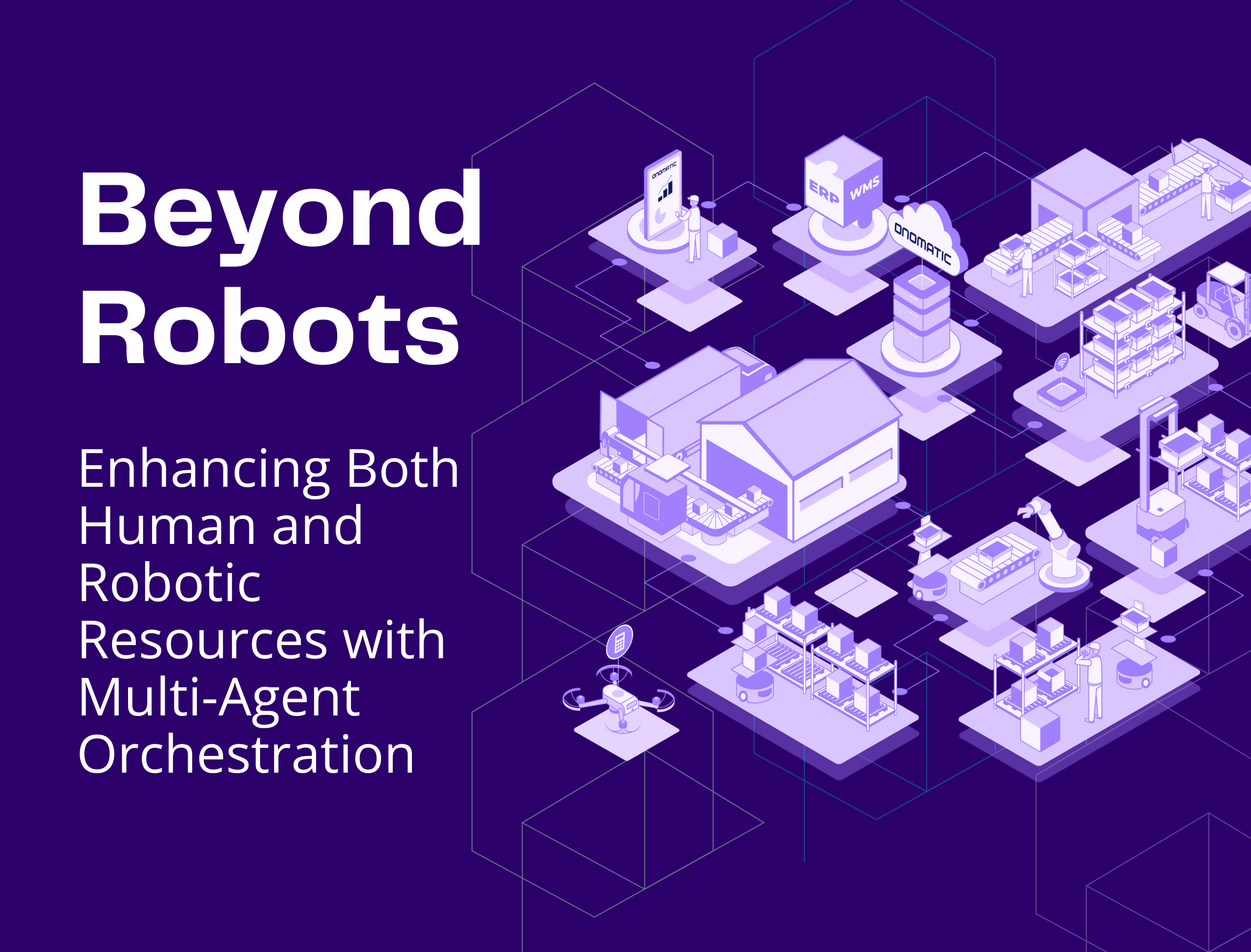Updated: September 16th, 2025| 3 min read
When you think about warehouse automation management, “orchestration” might bring to mind robots zipping through aisles, handling tasks with machine-like precision. But here’s the thing: real orchestration goes beyond just robots. It’s about getting the most out of everything—people, equipment, and yes, advanced tech too.
At Onomatic, we’ve been exploring how our platform could optimize both human-driven operations and robotic workflows in a phased approach.
Recently, a client came to us with a challenge: they needed to digitize and optimize the material flow within their manufacturing plant. The goal was to integrate and streamline both their human-operated forklifts and automated mobile robots (AMRs) to achieve just-in-time execution across the board. Together, we mapped out a phased roll-out plan that would first enhance their current human-operated systems before integrating advanced robotics. In this post, I’ll walk you through our phased strategy and how it’s designed to deliver optimal results.
Multi-Agent Orchestration: More Than Just Robots
Rather than diving straight into robotics, we proposed a more strategic approach—one that would build on their existing human-driven systems first, and then layer in automation. This phased implementation not only ensured a smoother transition but also maximized the effectiveness of every resource—human or robotic—right from the start.
Phase 1: Optimizing Human and Equipment Resources
In Phase 1, our focus was on enhancing the value derived from the client’s existing forklifts and human operators through:
- Dynamic Task Scheduling: Our goal is to boost productivity by optimizing task scheduling with our Workflow Queue Management. By prioritizing tasks according to real-time needs, the system helps ensure operators are engaged with the most crucial and time-sensitive jobs, reducing down-time and maximizing their effectiveness. In other words, we’re making sure that the right people are doing the right jobs at the right time.
- Path Planning and Traffic Management: We’re also addressing warehouse traffic flow by designing specific routes and task areas. This strategy aims to cut down on congestion, making sure forklifts and people weren’t stepping on each other’s toes—or wheels.
Phase 2: Bringing in the Bots
Once the human factors have been well considered and the plan is in place, we’ll move forward with integrating AMR bots into the mix.
- Smooth Transition: We are not just tossing robots into the fray and crossing our fingers. Instead, we’re ensuring the bots work alongside the existing operations, taking on tasks that are perfect for automation while leaving the more complex stuff to the humans.
- Optimized Workflow with AMR: The intended result? A hybrid operation where humans and robots each do what they’re best at, boosting efficiency across the board.
Making Human and Robotic Resources Work Together
Warehouse automation and multi-agent orchestration are key to modern logistics, but success hinges on integrating these technologies effectively. This phased approach we developed with our customer highlights a key point: real magic happens when people and robots work together seamlessly. And our platform is designed to make sure that happens.
Human-Agent Collaboration:
Onomatic assigns tasks in a way that makes sense for both humans and robots, taking into account where they are, what they’re doing, and what’s most important.
Intelligent Task Allocation:
Whether it’s making sure the bots don’t run out of juice or keeping human operators busy with the right tasks, our system balances the load so everything runs smoothly.
Handling Issues and Learning as We Go
No operation is perfect, so we built in tools to deal with hiccups and make the system smarter over time.
Proactive Monitoring: Our platform keeps an eye on things in real time, spotting problems before they cause delays.
Smart Recovery Solutions: If something goes wrong, the system quickly reroutes tasks to keep everything on track. Plus, it learns from every issue, so we get better at handling them in the future.
Multi-agent orchestration (MAO) isn’t just about managing robots—it’s about making sure everything in your operation works together smoothly, from forklifts to the latest AMR bots. By starting with what our customer already had and then bringing in robotics, we can help make sure resources utility is being maximized right from the start.
If you’re looking to streamline warehouse automation, remember that true efficiency comes from coordinating both human and robotic resources. Whether you’re just getting started or ready to take the next step with advanced robotics, Onomatic’s multi-agent orchestration platform has you covered.
Ready to overcome warehouse automation challenges?
Contact Onomatic today to learn how our MAO platform can help you optimize your operations.

